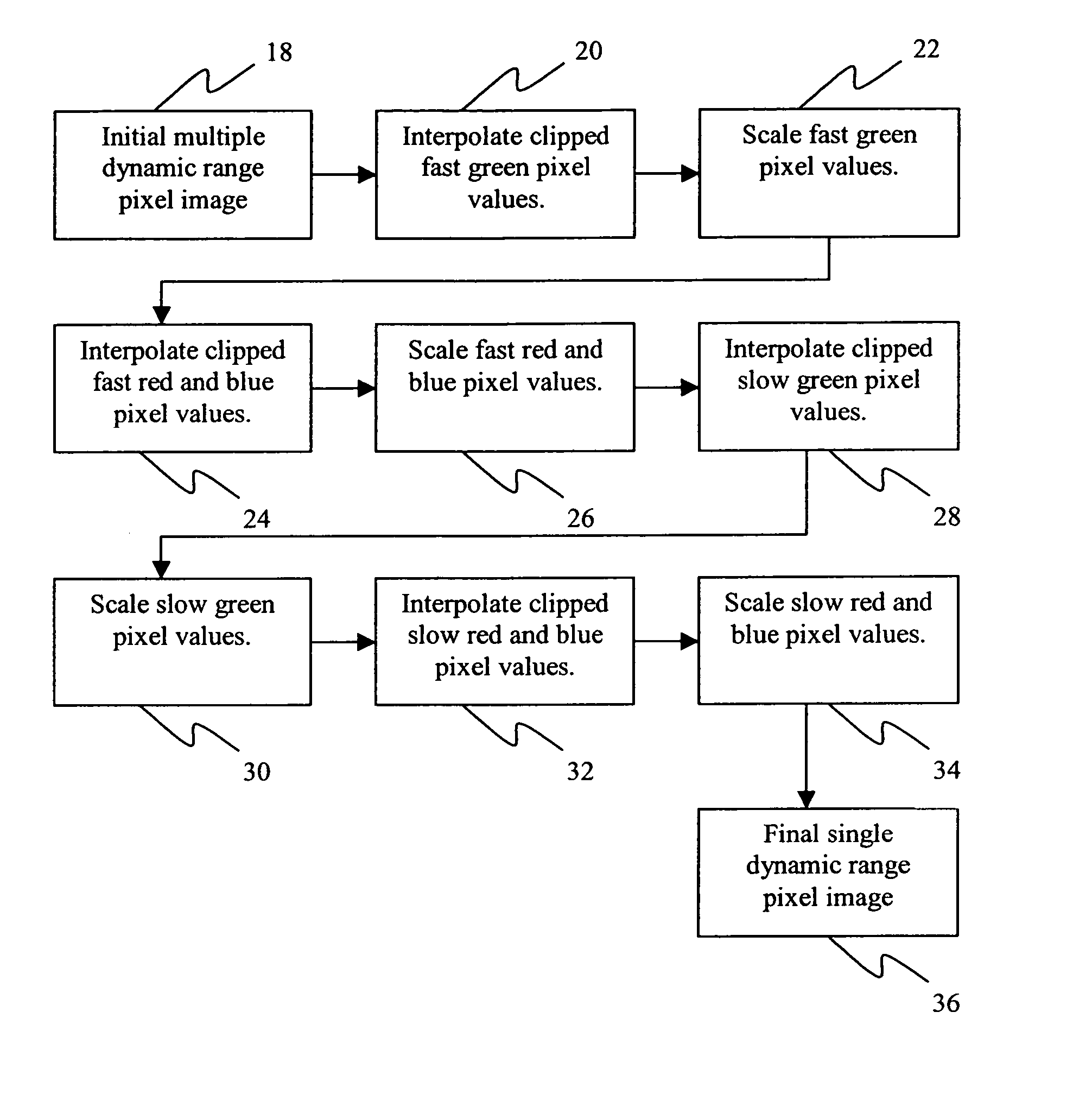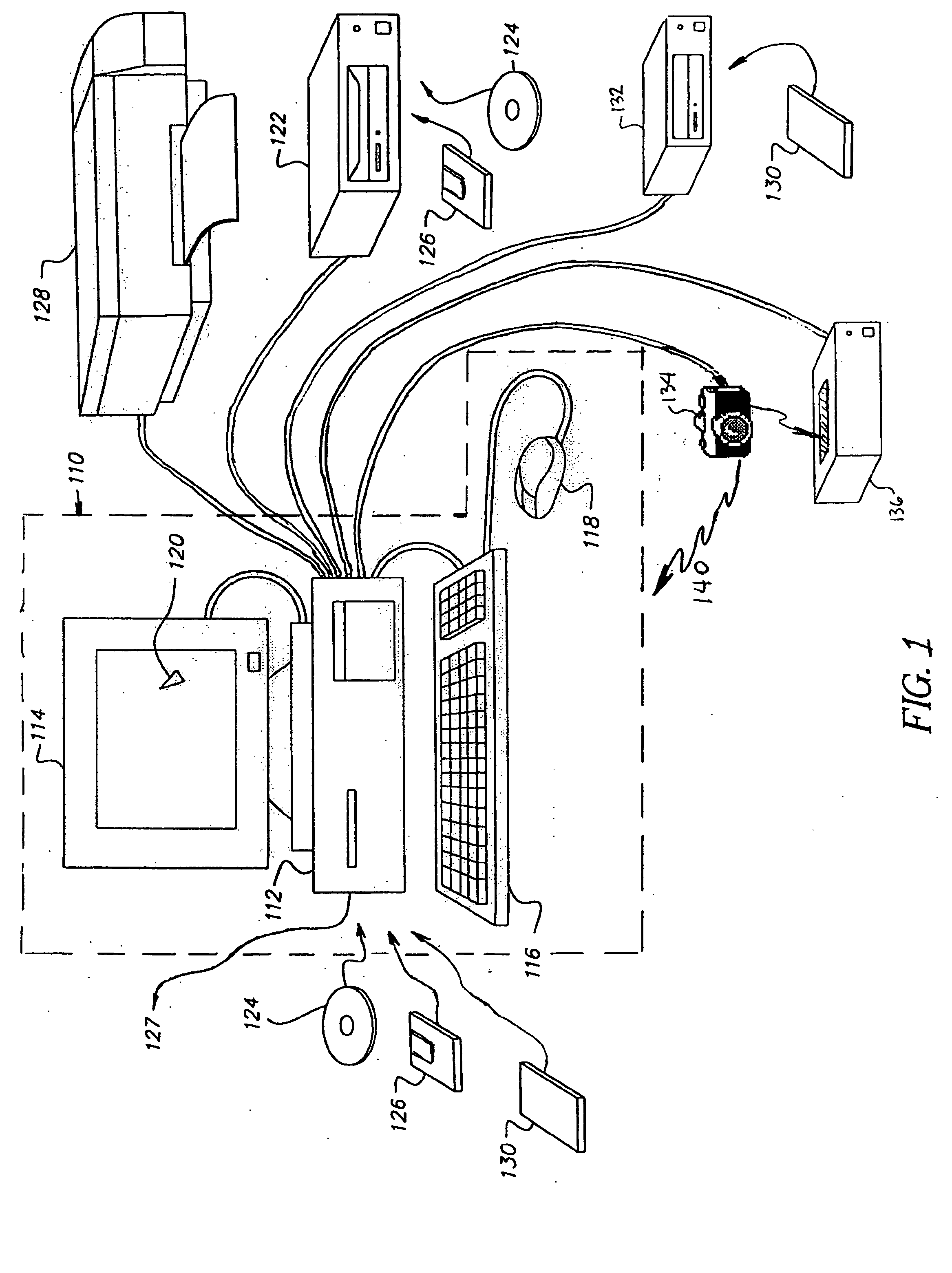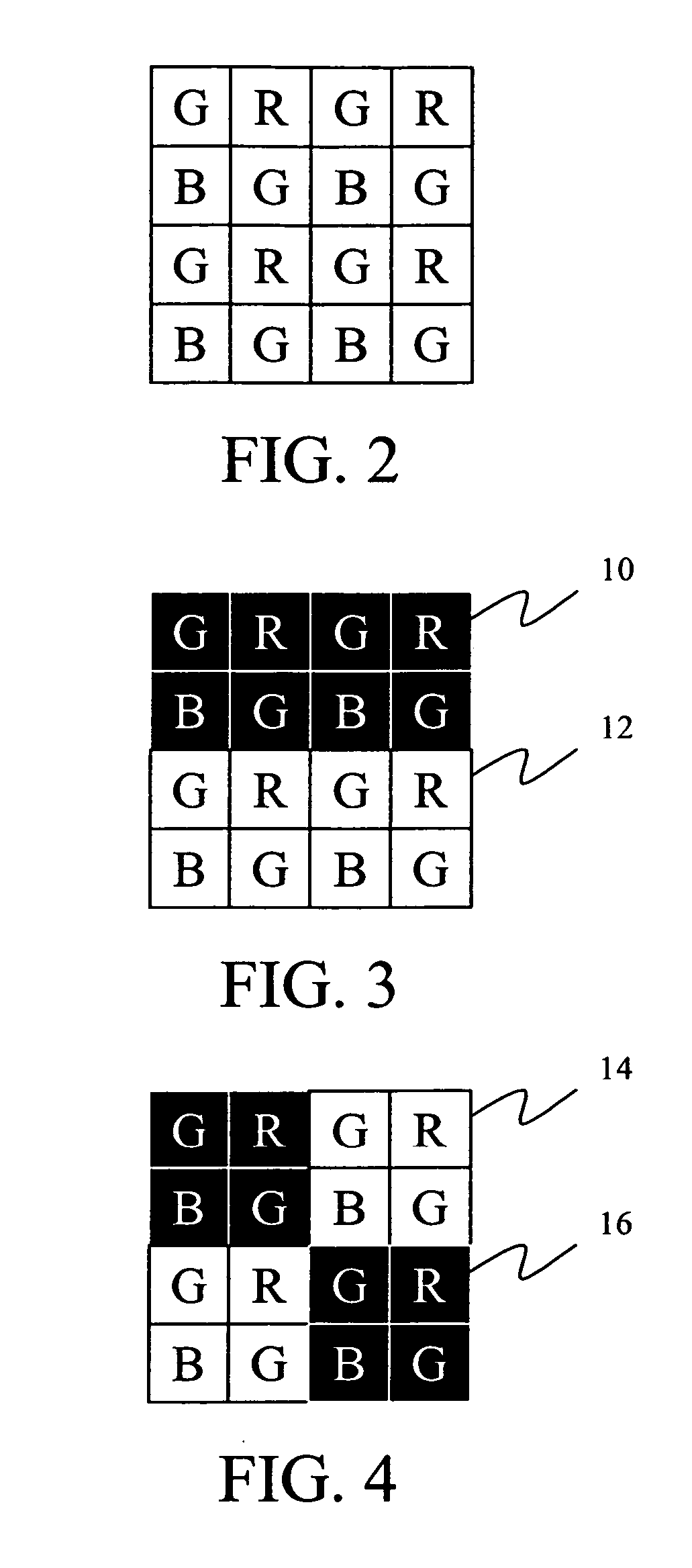Extended dynamic range image sensor capture using an array of fast and slow pixels
a dynamic range and image sensor technology, applied in the field of digital image processing, can solve the problems of increasing the cost and complexity of the sensor, the digital camera sensor does not have real-time adjustment capability, and the thermal electrons represent a major source of noise in the response of the pixel, so as to preserve image quality and spatial resolution. the effect of preservation
- Summary
- Abstract
- Description
- Claims
- Application Information
AI Technical Summary
Benefits of technology
Problems solved by technology
Method used
Image
Examples
second embodiment
A second embodiment is presented here for determining B09′. Let B09c stand for the original clipped pixel value of B09. This value is scaled to an equivalent slow pixel value, b09c:
b09c=B09c / k
If either value of H or V is less than b09c, it is disqualified as a possible estimate for B09′. Of the remaining predictor values, the one with the smallest associated predictor, i.e., h for H and v for V, multiplied by k is selected as the estimate for B09′. If all of the predictors are less than b09c, then B09′ is set equal to k(b09c−1).
[0069] Once all of the clipped fast red and blue pixel values in the image have been replaced with unclipped fast red and blue pixel value estimates (block 24), then all of the fast red and blue pixel values in the image are scaled to the photometric range representing the sensitivity of the standard sensor as depicted in FIG. 2 (block 26). The identical operation in performed on the fast red and blue pixels in block 26 as is performed on the fast green pi...
PUM
 Login to View More
Login to View More Abstract
Description
Claims
Application Information
 Login to View More
Login to View More - R&D
- Intellectual Property
- Life Sciences
- Materials
- Tech Scout
- Unparalleled Data Quality
- Higher Quality Content
- 60% Fewer Hallucinations
Browse by: Latest US Patents, China's latest patents, Technical Efficacy Thesaurus, Application Domain, Technology Topic, Popular Technical Reports.
© 2025 PatSnap. All rights reserved.Legal|Privacy policy|Modern Slavery Act Transparency Statement|Sitemap|About US| Contact US: help@patsnap.com



